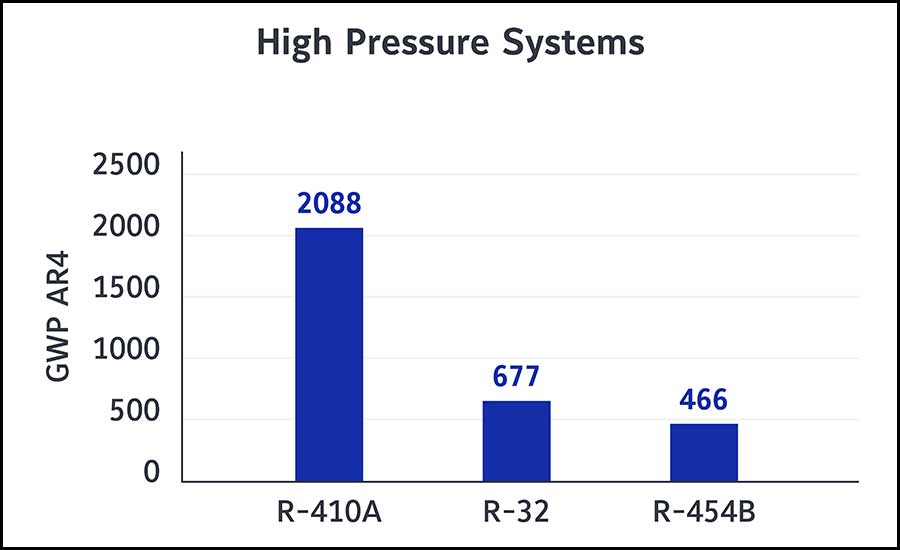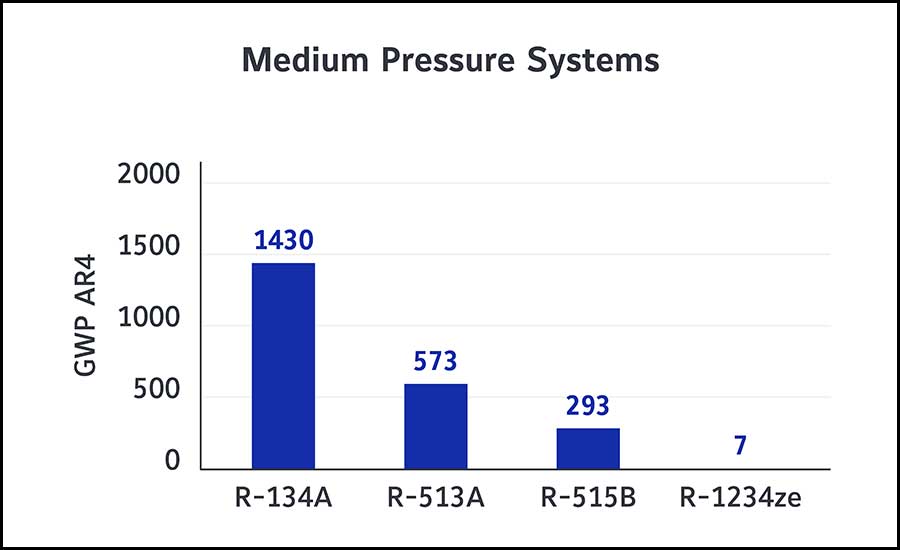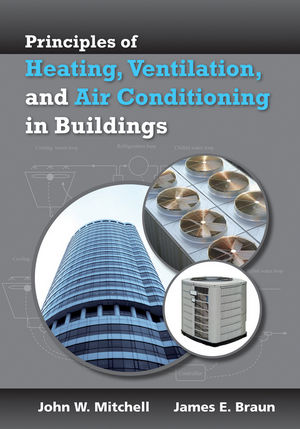Sustainability and decarbonization are top priorities for companies. When it comes to new construction and retrofitting existing buildings, the use of systems and components that reduce greenhouse gas (GHG) emissions is crucial in meeting these widespread goals. To maximize effectiveness, however, the focus must be on both increasing energy efficiency and minimizing the embodied carbon footprint.
Comfort and process cooling operations are key areas where buildings, including large offices, health care facilities, data centers, and manufacturing plants, can have opportunities to leverage advanced technologies to meet sustainability goals. Significant advancements have been made in air-cooled chillers in the past several decades that have positioned them as a key element in achieving more sustainable building cooling operations. It's important to understand how today’s air-cooled chillers can contribute to a lower embodied carbon footprint, reduce GHG emissions, and enhance energy efficiency.
Embodied carbon
In a chiller system, embodied carbon refers to the emissions that result from the manufacturing, transportation, installation, maintenance, and disposal of the product. Understanding the total embodied carbon of a product is an intense process that requires a full life cycle analysis of carbon emissions from cradle to grave. However, the processing of raw materials used to manufacture a chiller and the leakage of refrigerant into the atmosphere that may occur during its life are the most significant factors in the total embodied carbon of the product.
Fortunately, when compared to a chiller manufactured just 20 years ago, today’s chillers contain as much as 49% less embodied carbon, thanks to the use of less raw material and refrigerants with lower global warming potential (GWP). How do we know? Methodologies, such as CIBSE TM65, have been developed for manufacturers to calculate the total embodied carbon of HVAC products to assist building owners in calculating their total carbon footprint.
Critical to the reduction of embodied carbon in air-cooled chillers has been the steady reduction in unit size and weight, and in turn, reduced material usage. A major facet of these changes has been the development of smaller heat exchangers that can achieve the same amount of cooling capacity as legacy systems. High-efficiency heat exchanger designs, such as hybrid falling-film/flooded evaporators with enhanced heat transfer tube surfaces help to reduce the heat transfer surface area required to achieve the desired capacity. Continuous enhancements in evaporator heat exchanger tube surfaces have boosted capacity and efficiency without adding more surface area. Additionally, the introduction of all-aluminum microchannel condensers provides large reductions in quantities of copper and refrigerant used within the product. These advancements have enabled manufacturers to produce a smaller, lightweight chiller using minimal material.
Low-GWP refrigerants
Embodied carbon also encompasses the impact of the refrigerants used within the chiller. As the American Innovation and Manufacturing (AIM) Act and hydrofluorocarbons (HFCs) phasedown continues to progress, refrigerants have been top-of-mind in recent years. This evolution has been in motion since the 1990s, when the transition away from the use of ozone-depleting CFC and HCFC refrigerants was enacted. Since then, the industry has made significant progress in the ability of air-cooled chillers to work with lower-GWP refrigerants. Today’s air-cooled chillers not only meet current refrigerant standards, they can also surpass these requirements to help building professionals achieve their goals for carbon neutrality.
As a point of reference, high pressure chiller systems have transitioned from using R-410A as the primary fluid to using refrigerants, such as R-32 and R-454B, representing a 3- to 4.5-times reduction in GWP, respectively. Similarly, chillers that are designed to work with medium-pressure refrigerants have transitioned from using R-134A as the primary fluid to using lower-GWP refrigerants, such as R-513A and R-1234ze, representing a 2- to 200-times reduction in GWP, respectively.


Reduction in energy consumption
Carbon emissions can also result from electricity use during operation. This is an area that can be relatively large compared to the product’s embodied carbon, depending on system efficiency and the sources of electricity generation in the power grid. Therefore, in most cases, energy efficiency becomes paramount when identifying opportunities to drive sustainability. Technologies such as variable-speed drives (VSD), high-efficiency EC/PM motors, and free-cooling economizers have significantly improved chiller efficiency and can result in better total annual energy efficiency throughout the entire year.
There has also been an evolution toward more efficient compressor technology, phasing out reciprocating compressors in favor of high-efficiency scroll, screw, and centrifugal compressors. The injection of refrigerant vapor or use of mechanical components to change the interior geometry of the compressor to optimize its efficiency for the conditions at that instant in time are examples of this innovation. Improved heat exchanger technology has also played a major part in increasing chiller efficiency. Enhanced heat transfer tubes and technologies, such as falling-film evaporators and microchannel air-cooled condensers, provide efficiency gains while at the same time reduce weight from materials and the refrigerant charge. Evaluation of the efficiency of a typical air-cooled chiller available on the market 20 years ago versus today shows that these advancements can net as much as a 34% reduction in energy consumption.
Conclusion
As the demand for net zero buildings continues to grow, air-cooled chillers have become a preferred solution in advancing the sustainability and decarbonization of comfort and process cooling. When evaluating the impact on meeting these goals, it's important to consider the complete carbon footprint of the system, including the embodied carbon of the materials used; the global warming potential of the refrigerant; and the energy used during system operation.
The industry has made great progress to reduce the carbon footprint of air-cooled chillers. Advancements in heat transfer technology and improvements in compressor and fan efficiency have allowed manufacturers to reduce material use in production. The global transition to require low-GWP refrigerants has, likewise, made a significant impact in the embodied carbon of HVAC systems. At the same time, these innovations have resulted in engineering advancements that have increased energy efficiency and reduced equipment size and weight. Combined, these innovations have enabled air-cooled chillers to become a flexible, efficient HVAC solution that is ideal for meeting the growing requirements for building sustainability.
[1] New Buildings Institute (NBI), “The embodied carbon conundrum: Solving for all emission sources from the built environment” (February 26, 2020) https://newbuildings.org/embodied-carbon-conundrum-solving-for-all-emission-sources-from-the-built-environment/
[1] Environmental Protection Agency (EPA), “Background on HFCs and the AIM Act” (June 2, 2023) https://www.epa.gov/climate-hfcs-reduction/background-hfcs-and-aim-act



![Figure 1. U.S. Energy-Related Carbon Dioxide Emissions, 1990-2013. [2] Figure 1. U.S. Energy-Related Carbon Dioxide Emissions, 1990-2013. [2]](https://www.esmagazine.com/ext/resources/ISSUES/2020/07-July/Carbon-and-Water-Consumption_Feb22-2019.jpg?height=200&t=1594601673&width=200)




